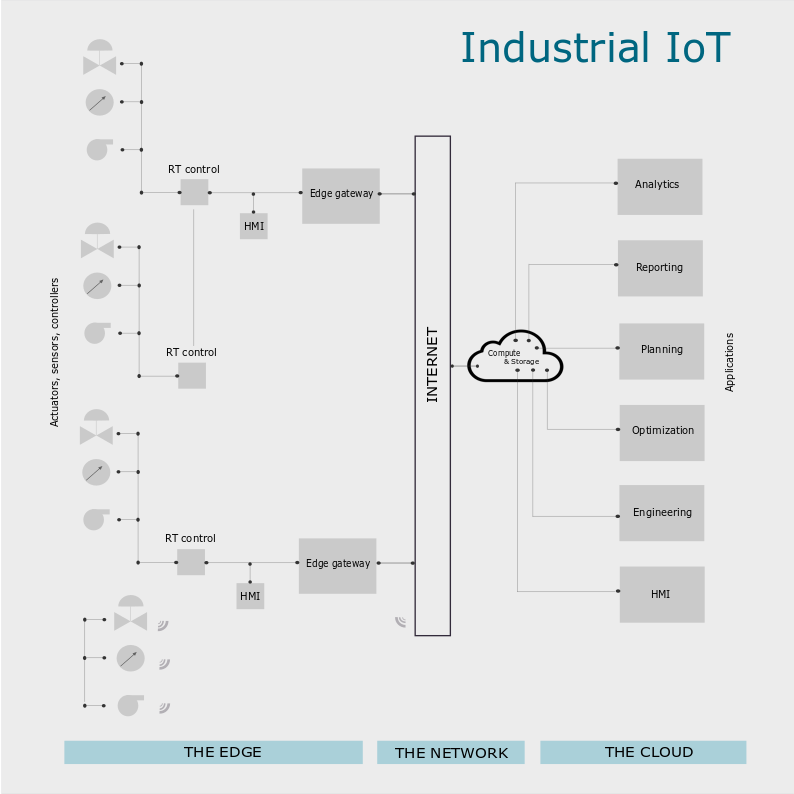Industrial IoT (Internet of Things) is currently one of the major fields that our customers tackle with. When pondering why industrial IoT (IIoT) has become so important, we have to consider the fact that decision making and planning in industrial environments, often involve a large volume of machinery, processes, materials and people, therefore it is one of the most complex. In the last decades, due to the evolution of digital technologies and especially of connectivity, all manufacturing and processing industries tried to set in place systems with higher degree of automation and remote monitoring and control.
Industrial IoT: Definition and Role
Factory owners, production sites or power plants managers, express their need for smoother processes, more secure environments, bottleneck prevention systems and real time monitoring. Some have already partnered with software development teams and designed specific software and management systems.
Data collection at each phase along the production and delivery chain plays a huge role in this process. The wealthy array of sensors, measurement instruments and observation tools were connected to controllers and actuators. A few steps later, the need of having a constant real time communication with the control units and management teams pressured research to develop systems able to carry the captured data in an automated-decision making system, designed to function based on predefined parameters and to send alerts when deviations appeared.
Industrial IoT (Internet of Things) covers all the interconnected devices, sensors and instruments networked with industrial software applications.
Industrial IoT’s main goal is to provide higher productivity and efficiency of industrial production chains through automated data collection, data exchange and analysis.
Industrial IoT Architecture
In order to better understand how IIoT (Industrial Internt of Things) works, it is important to look at its architecture. In the diagram below you can observe the roadmap of the data in a IIoT system: from the point of collection through different devices to the point where it is processed and analyzed, triggering automated and non-automated response.
The modular approach of the Industrial IoT Architecture defines four essential layers:
- The device layer where we include all physical elements.
- The network layer includes network buses, cloud computing and communication protocols to aggregate and transport the data
- The service layer where data is processed into information through various applications.
- The content layer or the user interface which let the user interact with data sets and information.
Applications of Industrial IoT
Industrial IoT is most effective for flow production and batch production units, where a large amount of data is produced and monitored on a daily basis.
From our experience we recommend Industrial IoT applications in the following fields:
- Industrial processing plants: chemical plants, pharmaceutical manufacturing, food and drinks plants, sugar refining plants, salt refining plants, metal refining plants, petroleum and oil refineries, natural gas processing plants
- Treatment plants: water treatment plants, sewage treatment plants.
- Power and energy plants: hydroelectric power plants, wind turbines parks, nuclear power plants, biomass power plants, solar power plants, natural gas power plant.
- Agriculture: big crop management, large farms management
Essential steps for assessing the suitable Industrial IoT solution
In order to design an industrial IoT solution that fits your industry sector and business, it is important to understand the factors that affect the decision.
- Assess the amount of data that need to be fed to the system and its frequency
- Evaluate how time sensitive is your production and business process
- Try to outline the scale at which the new applications should be deployed
- Investigate what type of coverage is needed: local, regional, national, global ?
- Describe the network topology analyzing where you need wired technologies, where wireless technologies are best and if there is case of some exotic technology.
- Have a look into the cost structure: infrastructure, licenses, services.
Maybe at first it sounds complicated, but we have been programming IoT applications for industrial customers for a while and from SOFTECH’s perspective, with proper requirements analysis and a detail oriented team, the right solutions will be revealed.
Should you have any questions, you are welcome to write us.


